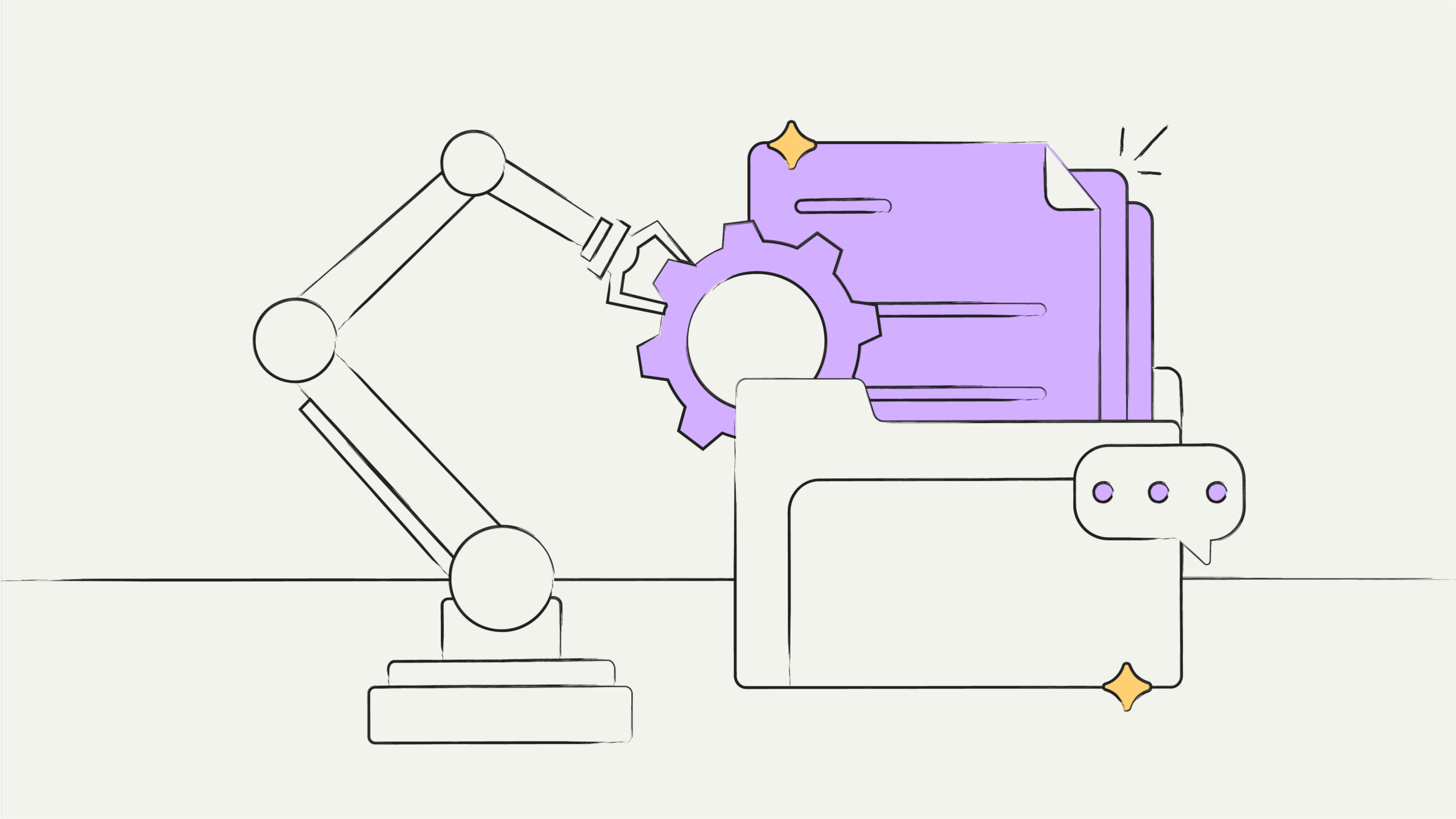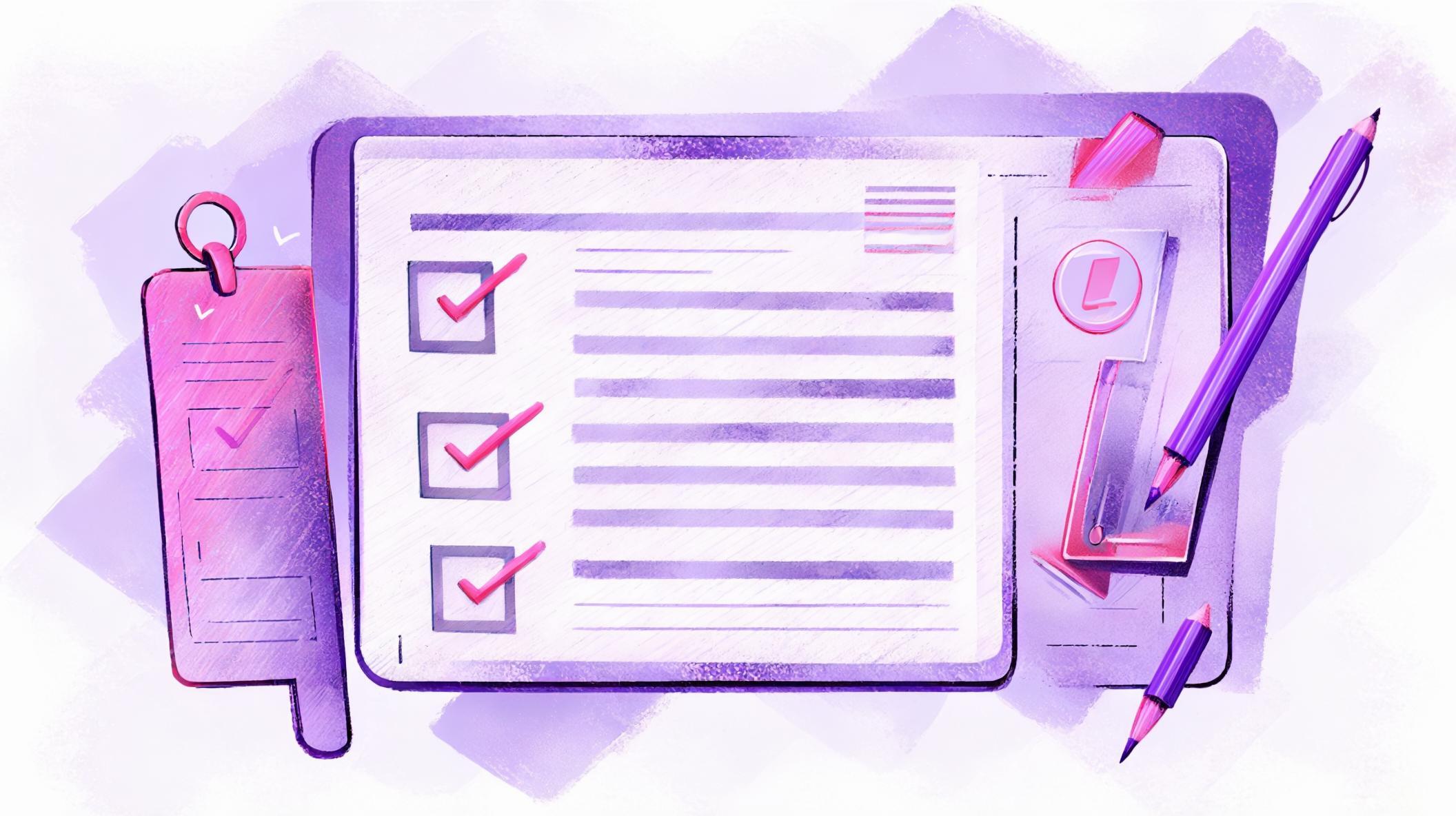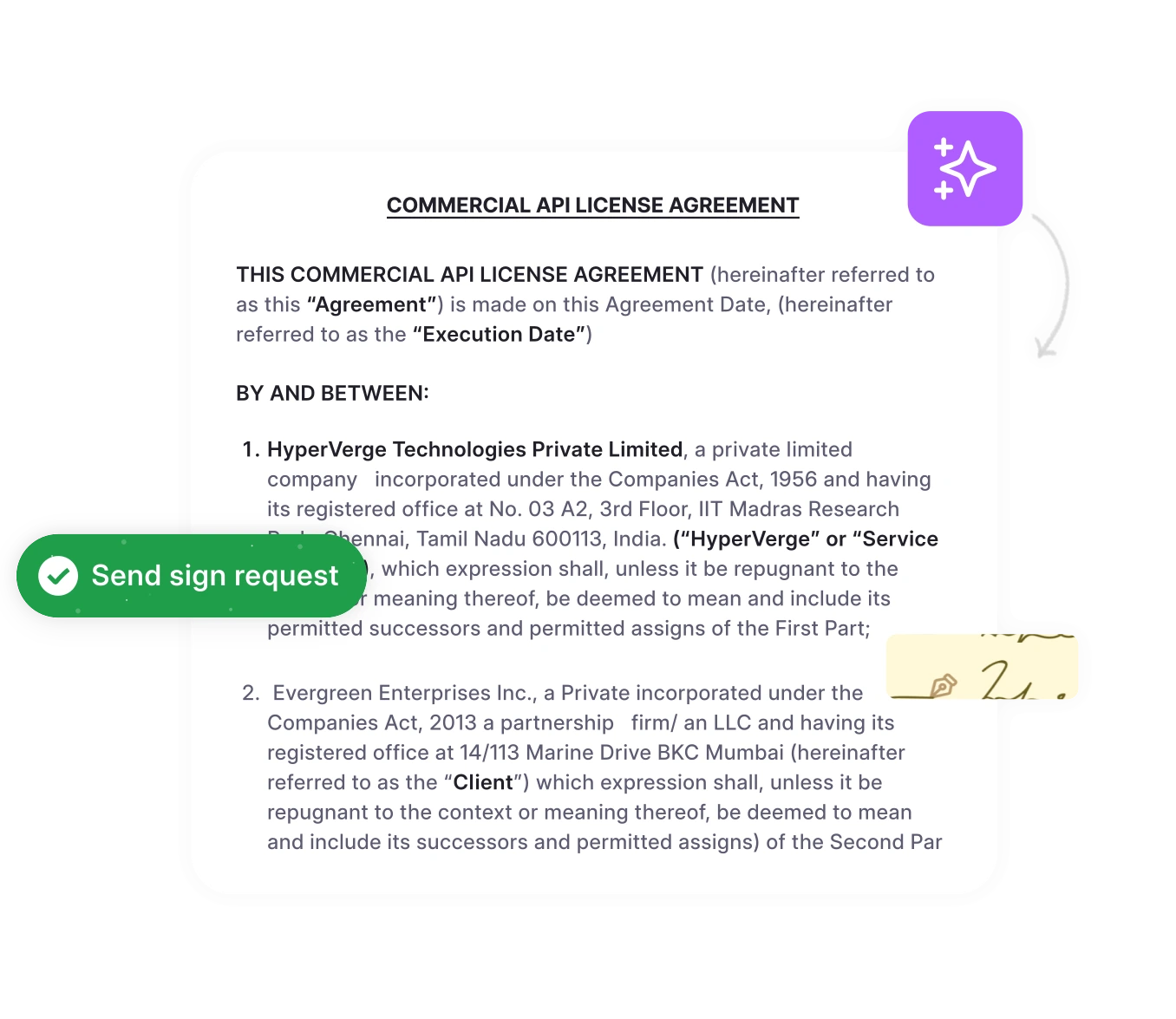Contracts are indispensable, but the traditional processes of contract generation are laborious. As organizations operate with distributed teams at a global scale, quick and reliable contract drafting is crucial.
This blog is for organizations that handle high volumes of contracts or batch-process them. You’ll learn how to automate and streamline the contract generation process, best practices, key functionalities, and more. Dive in.
What is contract generation?
Contract generation is the process of creating legally binding agreements between two or more entities. The contract details the terms and conditions of the relationship or transaction. This includes:
Initial contract authoring: Drafting the contract is typically done by legal assistants or paralegals.
Template & clause selection: These components need to adhere to organizational standards and legal requirements.
Data collection: This stage involves collecting details from various stakeholder departments and parties to ensure accuracy and context.
Customization: When the first draft is ready, the language and terms need to be crafted to match the language your organization and jurisdiction prefer.
Legal approval: This stage involves legal scrutiny and feedback for accuracy, completeness, and compliance.
The challenges of traditional contract drafting
Traditional contract drafting often means routine tasks, information research, collection and analysis, templatizing and formatting, sending review requests to legal, and signing off on approvals.
IACCM studied the contracting costs incurred by 700 major firms. Reportedly, contract creation takes 40% of the contract lifecycle time before signature. The monetary costs incurred by the top quartile were $3,800, $14,000, and $49,000 for simple, mid, and high-complexity contracts, respectively.
For legal teams, the traditional drafting process is redundant and repetitive. Their time, energy, and expertise can be put to better use.
Besides, for folks without a legal background, for example, sales or procurement teams, the process is unstructured and wasteful. Where do you start? Why waste an hour formatting a document or chasing legal review when there’s more important work?
Why automate contract drafting
Automated drafting empowers all organizational stakeholders, revolutionizing how contracts are drafted. AI drafting, standardized templates, automated contract lifecycle management processes, and playbooks can vastly bring down time, monetary, human, and opportunity costs.
Initial contract authoring: Drafting the contract, which is typically done by legal assistants or paralegals, can be automated with an AI copilot.
Template & clause selection: These contract components need to adhere to organizational and compliance standards.
Data collection: This stage involves collecting details from various stakeholder departments and parties to ensure accuracy and context. This can be automated with self-serve no-code workflows.
Customization: When the first draft is ready, the language and terms need to be crafted to match the language your organization and jurisdiction prefer. Furthermore, approval waterfalls can be customized to suit internal compliance requirements.
Legal approval: This stage involves legal scrutiny and feedback for accuracy, completeness, and compliance. Metadata auto-extraction and AI-redlining save legal up to 40% of contract review time.
Traditional contract drafting vs automated drafting
| Stage | Traditional | Automated |
| Initial drafting | Legal assistants author contracts from scratch | AI copilot drafts with precedent and playbooks |
| Standardization | Manually select templates and clauses | Access legal-approved templates & clause libraries |
| Data collection | Chase stakeholders via email and other channels | Self-serve with intake forms & dynamic conditional logic |
| Customization | Manual review and edits that are time-consuming and error-prone | Custom templates and workflows that derisk contract language |
| Legal approval | Manual contract requests to an already overworked legal team | Safer, compliant, and automated contract approval workflows with AI-redlining |
5 Benefits of automating contract drafting
According to a report by the Thomson Reuters Institute, on-demand contract generation is one of the top use cases of legal AI technology. 76% of professionals report using generative AI and ChatGPT to automate contract drafting. Here are the benefits of automating contract drafting:
1. Standardize templates and clauses
An automated contract creation process eliminates the need to draft contacts from scratch. With in-built guardrails and self-serve processes, you can edit no-code templates, saving time and resources.
2. Empower the whole organization
Here’s how different departments benefit from automated contract generation:
Legal: Increase legal productivity and accelerate contract creation from the first draft to the final pass with built-in safeguards designed to co-pilot with legal teams.
Sales: Create NDAs, MSAs, and sales agreements with legal-approved templates and standard clauses.
HR: Human resources teams can create error-free contracts in minutes. Standard templates can be set up and processed in batches for offer letters, ESOP agreements, NDAs, exit contracts, and more.
Procurement: Streamline and centralize the creation of vendor contracts, order forms, MSAs, etc.
3. Establish better compliance management
Compliance standards can be proactively baked into the contract creation process from start to finish. Standard templates and clause libraries reduce the risk of non-compliance and the likelihood of disputes. Automated contract generation systems can periodically reflect changes in regulations.
4. Faster turnaround time
Contract automation optimizes the contract generation process for agility and efficiency, so legal teams can focus on strategic tasks rather than rote work. The speed is especially essential for quick and confident decisions and faster deal closures.
Create contracts in minutes
Focus on real opportunity, not routine drafts. Turnaround contracts 80% faster.
Next up, let’s look at the kinds of contracts that are best suited for automated processes.
Types of contracts to automate
Automated contract drafting with AI makes life easier for multiple stakeholders across legal, HR, sales, and procurement teams. Today, with more technological capabilities than ever, a significant portion of high-volume, low-complexity contracts can be automated.
NDAs: They protect confidential information shared between parties.
MSAs: They outline terms that govern multiple transactions between parties. Automated drafting streamlines and irons out uniform service terms with preferred expectations across projects.
Sales agreements: They detail the terms and conditions of sales between buyers and sellers. Sales teams can get to a yes faster with automated drafting processes that don’t need legal review at every turn.
Employee agreements: They specify the terms of employment between employers and employees. Standardized employee contracts simplify HR processes and proactively ensure compliance with labor laws.
Lease agreements: They define the terms under which a party rents or leases property from a proprietor. Automated templates for lease agreements ensure consistency and compliance at scale.
Service level agreements: They set the expected level of service between a provider and customer. Automating templates for SLAs guarantees clear and consistent service expectations.
Loan agreements: They outline the terms under which a lender provides a loan to a borrower. Automated drafting bullet-proofs with compliance and regulatory protocols.
License agreements: They grant permission to use intellectual property and other assets under pre-defined conditions. You can streamline drafting them with automated templates for uniformity and legal compliance.
Common contract clauses to standardize
While many of these clauses are critical, the simplicity of specifications makes them a good target for automation. And standardizing them makes collaboration seamless, delivers a better experience, and gives you the business velocity you’re looking for.
Payment: Payment clauses detail terms of payment methods, late fees, invoicing, and dispute resolution provisions.
Termination: Termination clauses outline clear grounds for termination (insolvency or breach) and define notice periods and specific actions.
Copyrights, patents & IP: Ownership rights for intellectual property involve assigning ownership to a party or granting licenses for specific use.
Indemnity: The clause accounts for financial responsibilities for any loss or damage caused to either party or a third party.
Limitation of liability: This clause sets standardized limits on what each party can incur in the event of unforeseen circumstances.
Confidentiality: This clause defines what confidential information is and specifies restrictions on its use and disclosure as well as the duration of the obligation.
Non-compete: It specifies the scope and duration of non-competition restrictions for employees and contractors.
Warranty & disclaimer: This clause offers a limited warranty on products and services with disclaimers for liability.
Dispute resolution: The clause specifies the preferred method of resolving disagreements, namely negotiation, mediation, or arbitration, and the location for these proceedings.
Other boilerplate language: Language for clauses like governing law, severability, waivers, and notice addresses can also be standardized.
Top 3 contract generation software solutions
Contract generation is just one part of the digital contract management process. You can get a single-module CLM system or consider an end-to-end contract lifecycle management software. Here’s a quick peek into three of the best.
| Functionality | HyperStart | Juro | SpotDraft |
| Dynamic templates | |||
| In-take form | |||
| Conditions & fields | |||
| Mass actions | |||
| Salesforce integration | |||
| AI-Drafting | |||
| MS Word integration |
Want to know more about the top CLM solutions? Read the best contract lifecycle management tools.
The next section delves into specific functionalities that simplify contract generation with HyperStart CLM.
8 Key capabilities of HyperStart CLM’s create
HyperStart is an electronic contract management system powered by AI and automation. Expressly built for scaling teams, you can streamline and simplify the contracting process from start to finish.
The contract creation process is based on standard templates. What once took several days can be fast-tracked to as quickly as 2 minutes. Let’s go over the key functionalities of this contracting stage.
1. In-take forms
This is an intuitive dynamic questionnaire that efficiently creates contracts with speed. Whether you’re a seasoned contract professional or a newcomer, initiate contracts with essential information from relevant parties from the get-go. No need for back-and-forth communication.
2. Standard templates
Frequently used contracts can be standardized with pre-built templates and the right compliance guardrails. Dynamic conditions and fields make the process simple, user-friendly, and scalable for both internal and external teams. As instruments for repetitive use, they serve as standard fallbacks that help you focus on true legal requests.
3. Rich-text editor
The rich-text no-code editor is familiar and friendly to use for both legal and non-legal professionals. It maintains a real-time record of all version history just as Microsoft Word does. It’s important to keep all contracting activities where people work while maintaining a safe and detailed version log of all document files.
4. Conditional logic
Conditions and fields enable legal teams to establish certain rules and fallback clauses into the most frequently used templates. This eliminates legal intervention and empowers other stakeholder teams to have the necessary approvals for low-complexity contracts.
5. Audit trails
A comprehensive audit trail of all major contracting activity, like stakeholder changes, comments, suggestions, responses, and versions, is kept here. This adds a phenomenal layer of accountability and transparency to the activity.
6. Bulk actions
Bulk actions like automating and streamlining high-volume contracts save time and effort on repetitive work and follow-ups. Coupled with automated reminders, you can assign reviewers, send for approvals, and generate final documents for a batch of contracts in a breeze.
7. Integrations
HyperStart users can integrate their contracts with environments they know and love. The Microsoft Word plugin is a classic example of familiarity that breeds ease of use and adoption.
Contract creation is just the start.
With HyperStart you get the end-to-end contract management package. From creation to completion to commitment.
Additional features to consider when choosing a contracting software
Workflows: Automate compliant approval workflows without code.
Review: Get a first-pass contract review with AI-redlining in less than a minute.
Signature: 2-click legally binding signatures via multiple native options or integrations.
Repository: Locate any contract you need in seconds in a single source of truth.
Tracking: Visualize contract trends and key metadata across your portfolio with auto-generated dashboards.
In-flight: Track contract metrics like number of turns, approval time, and contract status at every turn to optimize for efficiency.
These were a few additional functionalities to remember while purchasing contract generation software. It pays to know your key pain points and address them altogether.
Manage all contracts in one place with HyperStart
Multiple scaling teams handle large volumes of contracts. Creating, approving, redlining, executing, tracking, and managing them is not the most interesting or rewarding work. Especially when they are done manually.
So we developed a platform purpose-built for these organizations to create, manage, and find legal-approved contacts without incurring additional legal expenses.
Book a demo with our team today to see it in action.












